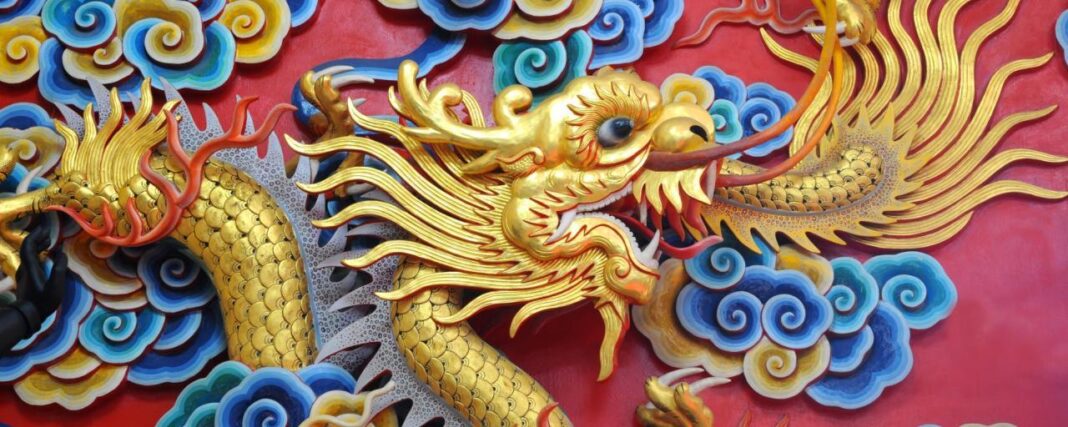According to Yuan Xin, the vice-president of the Population Association of China, there is a silver lining to the decline in China’s population this year: the cultural inclination to conceive a child during the Year of the Dragon. Many Chinese families believe that having a dragon baby will bring them luck and prosperity, and the statistics support this: the last Year of the Dragon, 2012, saw a surge in new births. However, it’s important to acknowledge that while this cultural preference for giving birth in a fortunate year is cherished, it may not be sufficient to reverse the long-term downward trend in population growth, which requires urgent and effective measures to increase the birth rate.
This is the message from demographic experts, as the latest data shows that China experienced its second consecutive year of population loss in 2023. The National Bureau of Statistics (NBS) reported on Wednesday that China’s population was 1.409 billion at the end of last year, a decrease of 2.08 million people (equivalent to the population of North Macedonia) from the previous year.
This follows a drop of 850,000 people (the same as the population of Comoros) in 2022 from 2021. Meanwhile, India overtook China as the world’s most populous country last year, with its population growing by 0.81% to 1.429 billion. Yuan of the Population Association warned on Wednesday that “the downward trend in China’s total population is inevitable and will become a permanent feature.”
He explained that China’s current fertility rate, the average number of children a woman has in her lifetime, is only around 1.05%, much lower than Japan’s 1.3%, the US’s 1.7%, and India’s 2%. He predicted that China’s population decline would be gradual in the next 30 years, but the total reduction would be substantial. He emphasized the need for the government to act now to tackle the demographic challenges that will emerge in the future. He also cautioned about the adverse effects of an aging population on the Chinese economy.
By the end of 2023, the elderly population (aged 60 or above) had reached 297 million, accounting for 21.1% of China’s total population. This was an increase from 280 million, or 19.8%, at the end of 2022. Yue Su, the chief economist for China at the Economist Intelligence Unit (EIU), stated in a research note that “We anticipate a surge in new births in 2024, fueled by latent demand. This could lead to a positive population growth trend once more.” “However, after a short recovery in 2024 and possibly 2025, the number of newborns is likely to resume its previous downward trend due to a combination of fewer women of reproductive age and falling fertility rates,” she added. She argued that China may not face a “baby crisis” like South Korea, which has a fertility rate of 0.9%, but it will be difficult for China to emulate Japan’s stable fertility rate (1.3%). She suggested that Beijing should implement effective policy measures, such as household-oriented fiscal transfers, improvements in working conditions for female workers, and better social welfare coverage for migrant workers.
According to the latest China Development Report 2023 by the Development Research Center of the State Council, China’s population has reached its peak and will keep shrinking in the coming years. The report projected that China’s population would drop to around 1.4 billion by 2035 and further to 1.3 billion by 2050. In an attempt to boost the birth rate, many Chinese cities announced various incentives for young couples to have more children last year. For instance, the Zhengzhou government in Henan province offered cash rewards of 2,000 yuan, 5,000 yuan, and 15,000 yuan for having one, two, and three children, respectively. However, many families complained that they did not receive the subsidy as the Zhengzhou government lacked the funds for this program.
They also claimed that they did not get the extra maternity leaves and other benefits that were promised. Some analysts attributed the low fertility rate to the delayed marriage and childbirth among young Chinese people, who faced income decline and unemployment. The NBS reported that the unemployment rate for people aged 16 to 24 was 14.9% in December, while that for people aged 25 to 29 was 6.1%. The bureau stopped releasing the youth unemployment figure last year, after it hit 21.3% in June, citing a revision of its statistical method. Kang Yi, the commissioner of the NBS, explained that the new youth unemployment rate only covered the 34 million people aged 16 to 24 who had completed their studies, while the 62 million students who were studying and looking for part-time jobs were excluded.
Unfortunately, superstition alone cannot reverse the overall trend. Even though many families prefer to have a child in the Year of the Dragon, some of them avoid the Year of the Sheep. Ma Yan, a sociologist from the University of the Chinese Academy of Social Sciences, found in a 2017 paper that some Beijing families shunned having a sheep baby, based on demographic data from 1957 to 2016. She attributed this to an old saying that “nine out of ten sheep are doomed.” This was originally a political slogan against Cixi (1835-1908), the Qing dynasty empress who was born in the Year of the Sheep. Netizens claimed that the Taiping Rebellion used this slogan to mobilize people to overthrow the Qing government in the 19th century. The next Year of the Sheep will be 2027.
financialpost.us

